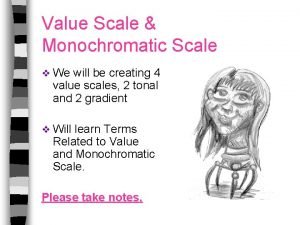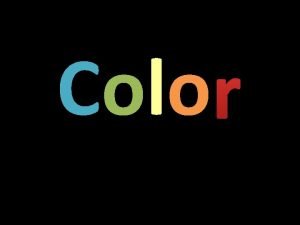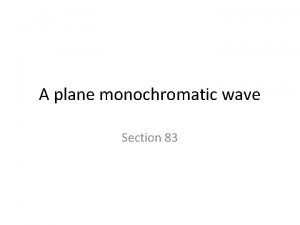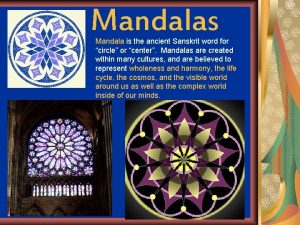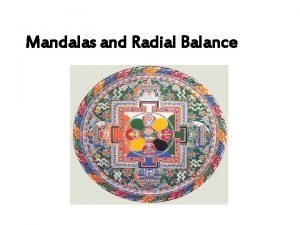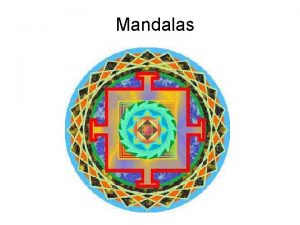Monochromatic and Complementary Mandalas Mandala is the Sanskrit










- Slides: 10

Monochromatic and Complementary Mandalas

Mandala is the Sanskrit word for circle. In religious art, the mandala is used to symbolize the universe. However, the pattern of a mandala -- a circle with a center- is found many places. For example, the iris of our eye, a snow crystal, a bird's nest --even a bicycle wheel.

Monochromatic color • • Mono= one Chroma= color Monochromatic= one color Monochromatic artworks use tints and shades of one color. A tint is a color mixed with white, and a shade is a color mixed with black.

Examples of monochromatic paintings

Complementary colors • Complementary colors are always in a pair. They are 2 colors directly across from each other on the color wheel. • Yellow/ Violet • Blue/Orange • Red/Green They can also be made with tertiary colors, for example yellow-green/red-violet

• When next to each other, complementary colors appear brighter. This is used often in optical illusion art.

• When they are mixed together, they become duller versions. To get this yellow ochre color, you don’t add black to yellow, you add violet.

Your task • Create a mandala design first. I’ll show you how to get started. • Carefully paint it in using complementary colors and tints and shades of them.

How to do it: • Start with one slice of the circle. There are 8 total. Draw many shapes on it. More complicated is better than less. • Trace your slice around the circle. A patter begins to form.

Grading • • • Grading: Complexity of design: 10 points Craftsmanship: 10 points Using 7 different tints and shades: 5 points Total: 25 points





